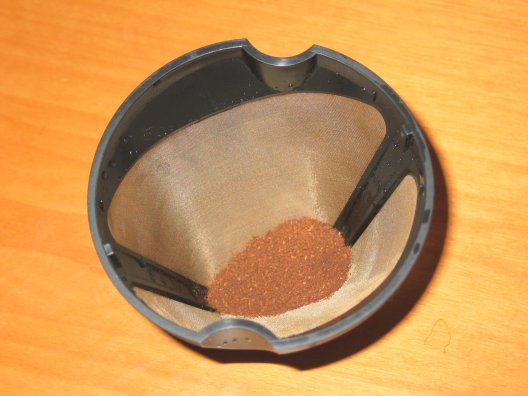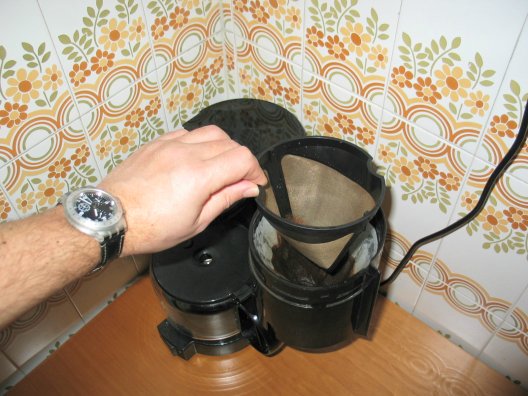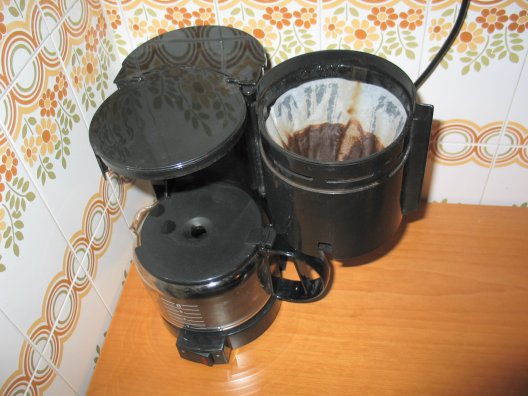Note in 2025:
This post was retrieved from my old blog via The Wayback Machine (archive.org).
Coffee is a very important pleasure of life for me. I started drinking instant coffee when I was 15 years old, and when I reached 30 I switched to filter. My day has not begun unless I have had a mugful of my favorite blend at home, and I usually have at least one more mug later on during the day. (These numbers represent a significant reduction compared to the four or five mugs that I used to drink every day until recently.)
My favorite blend consists of one part vanilla-hazelnut flavored filter coffee, for the taste, and one part espresso, for the punch. Yes, I put espresso in the filter coffee maker, the result is just filter coffee with a slight espresso taste, you should try it one day.
On this page I describe my environmentally friendly procedure for making coffee. By environmentally friendly I mean that it significantly cuts down on filter paper consumption, which means fewer wood cut to make the paper, less chlorine used to bleach it, and less waste in the landfills. Of course, the most environmentally friendly way to make coffee would be to make no coffee at all, which would mean less virgin forest cut to make plantations, less energy consumed to process and transport the coffee, less precious resources waster to market coffee to consumers, and less energy consumed to make the coffee in every home, but I guess that would be a bit too much “stepping lightly on the earth” for us.
The Procedure
Naturally, if you want to cut down on paper coffee filter consumption, the thing to do is to use a metallic coffee filter which you can wash and reuse every day for years. The following picture shows your regular super-market variety metallic coffee filter filled with one spoonful of filter coffee.

Unfortunately, the problem with the metallic filters, and the reason why they have not caught on, is that they do let fine coffee grounds to pass through. (This is especially true if your blend consists of half espresso.) So, the solution is to use a paper filter and a metallic filter together. The metallic filter holds the bulk of the coffee grounds, while the paper filter collects the fine silt. The metallic filter gets removed and washed every time you make coffee, while the paper filter stays in the coffee maker for many days, accumulating silt. The following picture shows my hand placing the metallic filter inside an (already used) paper filter in the coffee maker.

As it turns out, the silt does not have any adverse effect on the taste of the coffee; on the contrary, by impeding the flow of coffee it prolongs the percolation process, thus yielding stronger coffee. After one or two weeks (depending on use) the paper filter collects so much silt that when you try to remove the metallic filter it sticks to it. That’s when you know it is time to replace the paper filter. The following picture shows how the paper filter looks inside the coffee maker once you have removed the metallic filter to wash it in preparation for making another fresh pot.

If you try this procedure, I would be interested to know what you thought of it.